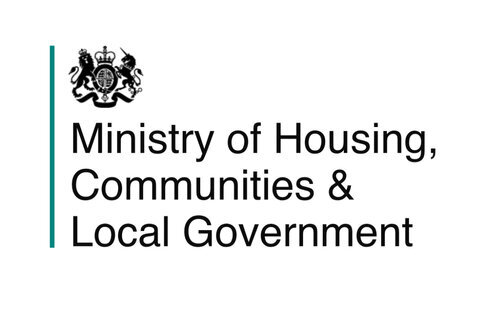Stage 2 FAQs (TFDP Slide Deck)
This document provides Towns with answers to Frequently Asked Questions regarding the Towns Fund Delivery Partner support in the Towns Fund programme. The questions have been divided into eight categories, and includes FAQs which have been officially published by DLUHC in formal communications.
This document provides Towns with answers to Frequently Asked Questions regarding the Towns Fund Delivery Partner support in the Towns Fund programme. The questions have been divided into ten categories, and includes FAQs which have been officially published by DLUHC in formal communications.
The latest version of this document was published on 28/07/22
Guidance: Stage 2 Business Case Documentation, Templates and M&E Indicators
This guidance covers the development and appraisal of business cases for the Towns Fund, and other requirements related to project development and submission of the Summary Document.
Towns are required to develop a Business Case for each project and submit summary documentation to DLUHC. This guidance covers the development and appraisal of Business Cases for Town Deals, and other requirements related to project development and submission of a Summary Document.
Annex A: Project Confirmation Table needs to be approved and signed off by both the Town Deal Board Chair and the accountable body’s Chief Executive or the s151 officer before being submitted.
Annex A1: Financial Profile should be completed to clarify the indicative financial profile of your Town and submitted to DLUHC when confirming projects, two months after receiving Heads of Terms
Annex C: Summary Document template must be completed and submitted to DLUHC for each project, as soon as they are ready and within 12 months of agreeing Heads of Terms.
Annex 2: M&E Plan template must be completed and submitted to DLUHC for each project, as soon as they are ready and within 12 months of agreeing Heads of Terms.
NB: Stage 2 ‘Business Case Development’ is now complete and all Town Deals are now in Delivery. Town Deal recipients were required to submit their business case documentation to the Department by the 31st of March 2023. All business case documentation was signed off by the Department by the 31st of July 2023. See the historic resources linked below for reference:
Pipeline Tracking Routemap
Having a clear strategic overview of proposed projects can put Towns in a stronger position to realise their ambitions. This portfolio view can be used in several ways, including to create consensus around possible future interventions and to engage with politicians, prospective investors and other key stakeholders to continue to bring vision to reality.
The Towns Fund Delivery Partner has designed this simple Portfolio Template and Dashboard to help you set out your pipeline of potential projects and to look at these through different lenses.
The spreadsheet includes a page with instructions and definitions to help you use the Template and Dashboard. You will also find a short tutorial video below.
Net Zero Implementation Pathways: Cycling Infrastructure
The third in our series of Net Zero Implementation Pathways series, this document looks at the meaning of net zero in cycling infrastructure projects.
Road transport currently accounts for 22% of all carbon emissions in the UK and is a major contributor to poor levels of air quality. The UK will only meet its net zero 2050 target and address the climate emergency in a meaningful way if it supports a modal shift to green and active travel. This will be achieved by implementing the necessary infrastructure, schemes and monitoring frameworks in its towns and cities that promote convenience, affordability, and safety complimented with the shifts required in behaviour.
Net Zero Implementation Pathways: Refurbishment
Following our guidance document on Net Zero Implement Pathways: New Development, we are pleased to publish this further guidance for Towns on how to implement net zero objectives through refurbishment.
The guidance document includes an overview of net zero in refurbishment, with key examples from Towns as well as business case tips and links to other useful resources.
Net Zero Implementation Pathways: New Developments
Globally, approximately 38% of energy related greenhouse gas (GHG) emissions are attributed to the building industry, with 28% deriving from building operation and 10% from the materials used in their construction and maintenance. To achieve net zero emissions by 2050 globally and in the UK, this decade must be spent at least halving emissions by 2030 from business as usual. These reductions must be applied across the entire building systems value chain, and taking a whole carbon lifecycle approach.
We are introducing these Net Zero Implementation Pathway guidance documents, to help Towns consider the pathway to implementation (including monitoring and evaluation) that lead to the best outcome from a net zero perspective. They intend to help you understand what you need to be thinking about at each stage of the lifecycle, who you need to engage, and what best practice and standards look like.
This document, the first in the series, sets out some guidance to ensure that towns in the UK are building and maintaining new developments in an environmentally and socially just way, not only to reduce emissions and build resilience to the worsening effects of climate change, but to boost local economies and create thriving, healthy communities.
Commercial Models and Attracting Investment
This paper provides guidance on considerations for Towns on the commercial structure of a project for which they have received a Towns Fund allocation. It provides this information in the context of understanding the structure and content of a Business Case.
Drawing on experience of running HM Treasury’s Better Business Case (BBC) training for circa 80 regeneration officers from the 101 Towns involved in the Towns Fund programme, and for members of the central DLUHC team, including the common questions raised, this guidance specifically considers the commercial case in parallel with the use of private / alternate financing.
Introducing the Protect Duty
Earlier this year, a government consultation took place that would introduce a Protect Duty; a piece of legislation that would place greater responsibility on owners and operators of Publicly Accessible Locations (PALs) - formerly known as Crowded Places and Spaces - to improve the protection of the public from terror attacks and criminal activity.
This two-page note provides details of what the Protect Duty is, and how it may impact Towns.
Monitoring and Evaluation: Towns Fund M&E Strategy
This document details DLUHC's approach to the monitoring and evaluation of the Towns Fund (which encompasses both the Town Deals and the Future High Streets Fund) and is intended to inform the public and stakeholders of the rationale behind the evaluation and the eventual outputs it will produce.
The aim of this document is to set out a strategy that provides a set of activities, methodologies and evaluation approaches that can help us better understand what works and why, thereby supporting the implementation future local growth and regeneration interventions.
Published 2 December 2021
Moving from OBC to FBC
This guidance document sets provides an overview of the fundamental considerations for Towns as you move from OBC to FBC.
Although we recognise Towns will be at different stages of the business case process (for example, shovel-ready projects are likely to be at FBC stage), for the purpose of this document we will focus on the transition between OBC stage to FBC stage.
We have produced this guidance in accordance with Green Book Guidance and in relation to the TFDP Business Case Template (optional).
Match Funding Guidance
Towns have successfully submitted their Town Investment Plans and have prepared, or are currently preparing, Business Cases for their interventions. As part of the preparation of these Business Cases, Towns need to consider all the sources of funding and how these sources will be used to deliver their interventions.
This short note sets out guidance on match funding, and more widely co-funding, for Towns as part of the production of Business Cases for the projects that were allocated Towns Fund funding. While it is not an exhaustive or fully comprehensive note, it aims to support the development of the Business Cases and decision making of Towns.
It should be noted that a degree of judgement will still need to be applied by Towns on a case-by-case basis when explaining how match funding has been achieved. We have included some examples at the end of this guidance.
An Introduction to 20-minute Neighbourhoods
This short learning burst provides an introduction to 20 minute neighbourhoods, giving a brief history of the concept and outlining how the Covid-19 pandemic has resulted in an increased desire to have local services available. The presentation also provides some case study examples and key considerations for implementing a 20 minute neighbourhood. A copy of the presentation slides is also available for download.
Tax Considerations
This document sets out—at a high level—some key prompts and considerations that Towns may wish to consider in determining how they constitute themselves in projects or take certain actions, with a focus on potential tax implications.
This document sets out—at a high level—some key prompts and considerations that Towns may wish to consider in determining how they constitute themselves in projects or take certain actions, with a focus on potential tax implications. This document is purely informative and does not constitute advice.
The following taxes and issues are discussed:
Activities conducted within the local authority
Activities conducted by Special Purpose Vehicles (SPVs)
Stamp Duty Land Tax (SDLT)
VAT in SPVs and local authorities
The document is set out with some key information relating to these four topics and questions that Towns should ask themselves and / or specialists. This is not an exhaustive list of topics or queries Towns need to take into consideration from a tax perspective, and if you have further questions, you should consult your local tax and finance teams.
Delivery and Procurement Methods
This short guidance evaluates both delivery and procurement methods against the needs of the Towns, setting out key considerations to consider when identifying the options for delivering their project.
This short guidance evaluates both delivery and procurement methods against the needs of the Towns, setting out key considerations to consider when identifying the options for delivering their project.
Economic Case: Best Practice Annex C - Culture and Heritage
This short guide is supplementary to the Economic Case: Best Practice Guide, and provides guidance on how to quantify and monetise economic benefits related to culture and heritage interventions.
This short guide is supplementary to the Economic Case: Best Practice Guide, and provides guidance on how to quantify and monetise economic benefits related to culture and heritage interventions.
The step-by-step guide on estimating economic benefits covers:
Tools and resources
Identifying economic benefits
Methodologies of quantifying benefits
General appraisal considerations
What if the benefits cannot be quantified?
Consultation top tips
This document serves as guidance for towns who are seeking to consult stakeholders and the public. Its purpose is to provide practical advice and ideas on the consultation process.
This document serves as guidance for towns who are seeking to consult stakeholders and the public during the planning process. Its purpose is to provide practical advice and ideas on the consultation process, as well as providing valuable information regarding the differences between statutory and non-statutory consultees.
Economic Case: Best Practice Annex B - Development
This annex to our Economic Best Practice guide provides additional guidance on how to quantify and monetise economic benefits related to development and land-based interventions.
This short guide is supplementary to the Economic Case: Best Practice Guide, and provides additional information on how to quantify and monetise economic benefits related to development and land-based interventions, primarily residential, commercial and/or mixed-use development.
The step-by-step guide on estimating economic benefits covers:
Tools and resources
Identifying market failures
Identifying economic benefits
How to calculate economic benefits
Site-specific LVU
Wider LVU
Public realm improvements
Case study
Key considerations
TFDP Business Case template
The Towns Fund Delivery Partner (TFDP) have prepared an optional business case template for the Towns Fund programme, along with a summary document template and proportionality guide.
The Towns Fund Delivery Partner (TFDP) have prepared an optional Business Case template for the Towns Fund programme. This template should help Towns establish a sound structure for their Business Cases in line with both government guidance and best practice.
Please note that this template will be regularly updated with changes in guidance or policy, and Towns should check back regularly to see any updates. A change control note has been added to the front of the document to inform users of the updates made.
The Business Case template document also provides the accompanying guidance and resource:
Summary Document: as part of the business case process, a Summary Document must be submitted to MHCLG. The Summary Document is mandatory, and must be approved by MHCLG before funding can be released.
Proportionality Guide: for each of the five cases, we set out key questions and considerations to help you gauge the level of detail required for your business case. At the end of the document, you can use the Proportionality Tool to assess where each business case falls on the scale of these key questions, which should help you understand the level of detail required for your business case.
We have published a blog, which introduces the template to Towns.
The template was updated to version 4 on 19th August 2021
Stage 2 Support Offer
We are working to support you in developing robust and considered Business Cases and projects that will help you achieve positive change in your Town. This document summarises what is on offer during Stage 2 up to October 2021.
As the Towns Fund Delivery Partner, we are working to support you in developing robust and considered Business Cases and projects that will help you achieve positive change in your Town. Your Town Coordinator will work with you to guide you through the resources available and ensure you can access appropriate support throughout each stage of the Towns Fund process. This document summarises what is on offer during Stage 2 up to October 2021.
A recording of the recent Town Resource Showcase webinar can also be found on the website.
This document was updated on 4th August 2021.
Project Initiation Document template
This template sets out a standard Project Initiation Document template with clear instructions as to what to capture in each section.
A Project Initiation Document can help you to mitigate risks as you progress towards the project initiation stage. It will also create a good foundation from which to develop a business case. The purpose of a Project Initiation Document (sometimes called a “PID”) is to record basic, but important, information to better define the project.
TFDP have developed this Project Initiation Document template, which clearly sets out what to capture in each section.
Please see our blog for further details of the benefits of Project Initiation Documents. If you have any questions about how to use the template, please contact your Town Coordinator.


















